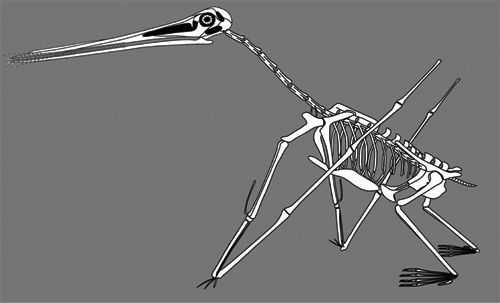
The photograph of the skeleton of Gegepterus changae (By JIANG and WANG)
JIANG Shun-Xing and WANG Xiao-Lin, Paleontologists from Institute of Vertebrate Paleontology and Paleoanthropology (IVPP), Chinese Academy of Sciences, described a new specimen with important features of Ctenochasmatid pterosaur from Early Cretaceous-age Yixian Formation of Liaoning, China, as recently reported in the latest issue of Vertebrata PalAsiatic 2011(2).
The new specimen (IVPP V 11972) is incomplete, preserving the posterior part of the skull and mandible, and the most parts of the postcranial skeleton. It is the second specimen assigned to Gegepterus changae according to the unique features in the skull and cervical vertebrae. The first specimen was described in 2007 as the holotype of Gegepterus changae and is an incomplete specimen, consisting of a partial skeleton (including skull and lower jaw) and some soft tissue, with some important features missed.
The new specimen preserves some new features in the vertebrae, pectoral girdle, and other parts of the skeleton. JIANG and WANG identify the new features and further add a unique feature, two foramens on the nasal, to the diagnosis of Gegepterus changae. “Based on the foot and the degree of ossification of the epiphyseal regions of the hindlimb, we suggest that it is an immature or subadult individual”, said JIANG.
Unluckily, only specimens with the skull are described at present. JIANG said, “More complete fossils will be needed in order to determine the phylogenetic position of the species within the archaeopterodactyloid clade Ctenochasmatidae.”
